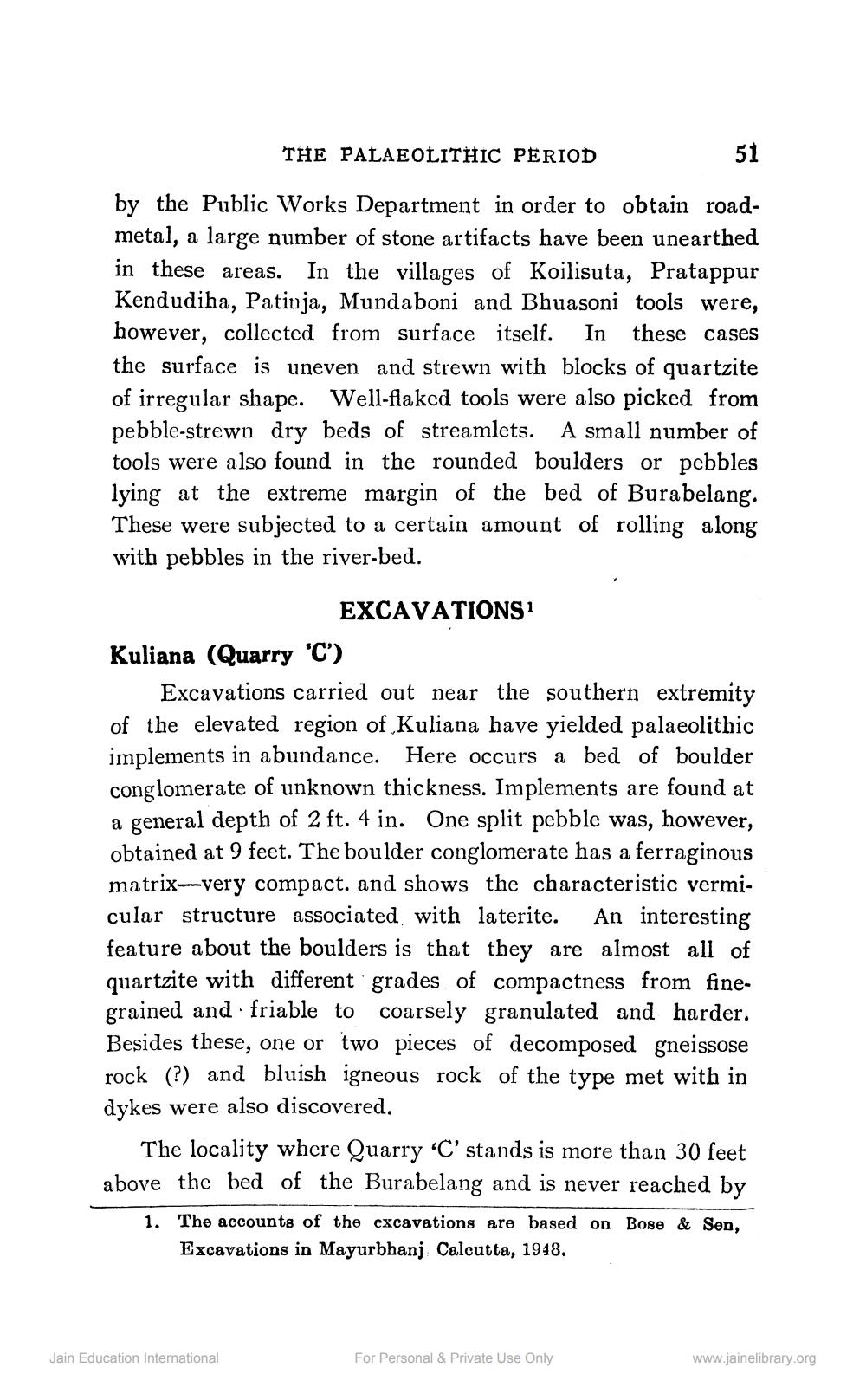________________
THE PALAEOLITHIC PERIOD
51
by the Public Works Department in order to obtain roadmetal, a large number of stone artifacts have been unearthed in these areas. In the villages of Koilisuta, Pratappur Kendudiha, Patinja, Mundaboni and Bhuasoni tools were, however, collected from surface itself. In these cases the surface is uneven and strewn with blocks of quartzite of irregular shape. Well-flaked tools were also picked from pebble-strewn dry beds of streamlets. A small number of tools were also found in the rounded boulders or pebbles lying at the extreme margin of the bed of Burabelang. These were subjected to a certain amount of rolling along with pebbles in the river-bed.
EXCAVATIONS1
Kuliana (Quarry 'C')
Excavations carried out near the southern extremity of the elevated region of Kuliana have yielded palaeolithic implements in abundance. Here occurs a bed of boulder conglomerate of unknown thickness. Implements are found at a general depth of 2 ft. 4 in. One split pebble was, however, obtained at 9 feet. The boulder conglomerate has a ferraginous matrix-very compact. and shows the characteristic vermicular structure associated with laterite. An interesting feature about the boulders is that they are almost all of quartzite with different grades of compactness from finegrained and friable to coarsely granulated and harder. Besides these, one or two pieces of decomposed gneissose rock (?) and bluish igneous rock of the type met with in dykes were also discovered.
The locality where Quarry 'C' stands is more than 30 feet above the bed of the Burabelang and is never reached by 1. The accounts of the excavations are based on Bose & Sen,
Excavations in Mayurbhanj Calcutta, 1948.
Jain Education International
For Personal & Private Use Only
www.jainelibrary.org




